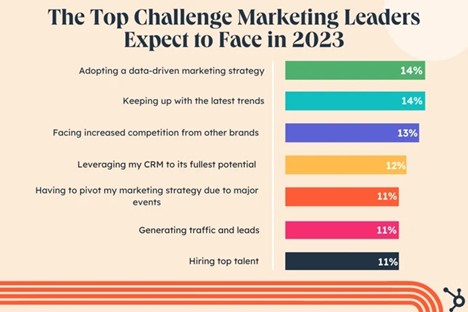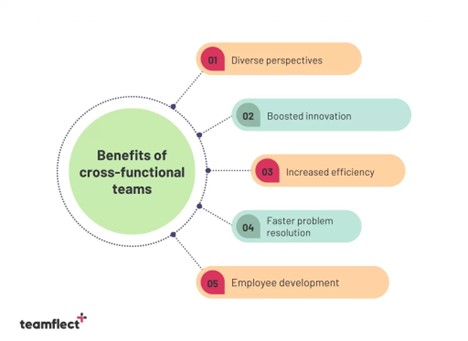Shiny Objects or Solid Strategies? When to Embrace (or Avoid) the Latest Craze
Today’s digital marketing world is marked by rapid digital transformation, continually-changing consumer behaviors, and an ever-evolving carousel of new trends. B2B marketers face the constant challenge not only of keeping up with new marketing trends as they emerge, but determining which ones are fleeting fads and which mark real opportunities.
So—how do you tell the difference?
In this article, we’ll holistically explore the landscape of marketing trends evolution, including how they emerge, what makes for a lasting trend vs. a short-lived craze, plus how to know which trends to pursue and which ones to leave at the curb.
Quick Takeaways:
- Marketers are motivated to quickly adopt new trends to position their brands as innovators and industry leaders.
- Adopting marketing trends too quickly, however, can lead to wasted time and money, or worse, a public brand faux-pas.
- It’s important to vet trends thoroughly, including their origins, fit with your unique brand, and practicality for implementation.
- Successfully navigating marketing trends long-term requires setting up teams and systems for ongoing innovation, testing, and iteration.
The Allure of New Marketing Trends
For B2B marketers constantly looking for ways to edge out the competition, break into new markets, and better engage their target audiences, a new marketing trend can feel irresistible. Being a first-mover on new trends can position your brand as an innovator—a company that’s ahead of the curve and not willing to stick to the status quo.
But that’s not the only (or even the most common) reason brands are quick to jump on new trends. They are also motivated by external pressures that exist in today’s hyper-connected world, making brands feel like they better get on board now or risk irrelevance. These factors include:
- Competitive Pressure: When a main competitor adopts a new marketing trend, it can feel like you’re at risk of losing business to them if you don’t quickly do the same.
- Success Stories: One highly-touted success story can be alluring for B2B marketers, even if it’s not clear that all businesses are experiencing the same.
- Media Influence: When a trend gets a lot of initial media hype, it can build pressure for brands to be part of the trend or risk falling behind.
- Customer Expectations: If customers expect a certain type of brand content or communication (ex: through a specific channel or format), brands feel rushed to meet that expectation.
But jumping on a marketing trend too quickly also runs the risk of wasted time, money, and effort on a strategy that you don’t know enough about (yet), hasn’t been fully proven effective, or may not be totally right for your brand.
According to HubSpot research, it’s one of the top challenges marketing leaders face—one that’s likely to grow as the marketing landscape continues to transform at a more rapid pace.

The Science Behind Marketing Trends
The growth of any marketing trend is rooted in consumer behavior and sentiment. A trend begins as an innovative response to new consumer needs, usually alongside technological or cultural changes. As new innovations prove effective, they quickly gain traction.
An easy example is the rise of smartphones—as people used them more frequently in their daily lives, it vastly changed the way people wanted to communicate with brands. Brands had to develop mobile-first strategies in response. This trend, of course, is now a permanent fixture in the digital marketing world.
But the digital era has also accelerated this process at scale, as consumer behaviors change more rapidly and on a wider range of platforms—from social media to search engines to mobile apps, at virtual events and throughout the digitally-driven marketing and sales process.
A few years ago, for example, non-fungible tokens became a buzzword and brands began to experiment with using them as marketing tools. As time progressed, though, it became clear that brands didn’t fully understand how to leverage them.
National Geographic tried to launch their own NFT club, but the platform failed to mint the NFTs, leading to fast and sharp consumer backlash. Porsche had a similar experience. These stories show that even the world’s most well-known brands aren’t immune to premature and poorly-executed trend adoption.

The constant influx of new marketing trends and the speed at which they evolve leads to hasty decisions for marketers as they work to keep up. Determining the longevity and real potential impact of a trend can become difficult amidst the noise. B2B marketers often find themselves in a dilemma—to adopt new trends to stay competitive, or to wait and see if they have lasting value.
When to Embrace (or Avoid) New Marketing Trends
Knowing when to embrace or avoid new marketing trends requires having a solid understanding of your brand, your audience, and your ability to test trends as they emerge. Think about the following:
Evaluate Trend Origins and Mechanisms
Look beyond the surface appeal of a trend. Investigate its origins. Is it driven by genuine consumer needs or technological advancements only? If a trend emerges due to increasing engagement or consumer demand, it’s worth considering. But a trend that’s just a byproduct of fleeting social media hype or direct promotion requires caution.
Analyze Data Beyond the Hype
Collect and analyze data on how the trend has performed in industries similar to yours. This isn’t just about looking at success stories but also understanding the failures. What metrics improved as a result of adopting the trend? Was there a real ROI or just a temporary spike in certain metrics? What do trusted industry experts have to say about it?
Assess Fit with Your Marketing Ecosystem
Consider how the trend fits into your existing marketing ecosystem. Does it complement your current strategies or would it require a complete overhaul? For example, if account-based marketing is trending but your business thrives on broad-market approaches, the trend might not suit your needs.
Scrutinize the Implementation Timeline and Resources
Some trends can be implemented quickly and show immediate results, while others might need a long-term commitment and substantial resources. Assess the feasibility of adopting the trend based on your available resources and the expected timeline for seeing results.
Consult with Frontline Teams
Engage with your sales, customer service, and front-line marketing teams. They can provide insights into whether a trend is just a buzzword or if it has real traction among your target audience.
Monitor Early Adopters Closely
Identify and study early adopters of the trend, especially those in your industry. Analyze their successes and setbacks in detail. This can provide valuable insights into the practical challenges and benefits of the trend for your own business.
Test Before Full Adoption
If possible, conduct a small-scale test or pilot program. This allows you to gauge the trend’s effectiveness and suitability for your business without committing significant resources.
Be Wary of Echo Chambers
Marketing circles can sometimes echo the same ideas, creating a bubble of hype. Seek diverse opinions and perspectives to ensure you’re not getting swept up in industry groupthink.
Trust Your Brand’s Core Values and Vision
Finally, align trend adoption with your brand’s core values and long-term vision. If a trend doesn’t align authentically with what your brand stands for, it’s likely to do more harm than good for your brand, regardless of its popularity.
Creating Systems for Trend Adoption
The key to capitalizing on new marketing trends (while quickly dropping the bad ones) lies in creating systems and processes for their swift evaluation and implementation. This approach enables businesses to not only keep pace with existing trends but harness the potential of emerging trends effectively.
The foundation of this kind of system is a dedicated innovation team, a cross-functional group that brings together diverse perspectives from marketing, sales, analytics, and product development. This team’s primary role is to scout for emerging trends, assess their relevance to your business, and swiftly establish pilot tests or small-scale experiments to gather insights for informed decision-making.
Cross-functional teams have proven to deliver many important capabilities necessary for navigating the trends landscape, including higher innovation, faster problem resolution, and greater efficiency.

Data analytics also play a pivotal role. Leveraging advanced analytics tools, your marketing team can track the performance of new initiatives, measure their impact against key performance indicators, and gain valuable insights into customer responses and market trends. This data-driven approach ensures that decisions are not based on speculation, but concrete evidence of a trend’s effectiveness.
Finally, fostering a culture that values innovation and is open to calculated risks is essential. Encouraging experimentation and accepting that not every trend will yield positive results creates an environment where learning from failures is as valued as celebrating successes. In the long run, this leads to an ability to quickly capitalize on trends that work for your brand, while eliminating the ones that don’t.
Televerde can help you establish a robust, data-driven marketing strategy built to innovate rapidly in today’s fast-moving B2B world. From demand gen to lead development, we use in-depth analysis and comprehensive insights to strategically grow and nurture your pipeline. Contact our team to learn more about how we can help you grow.


